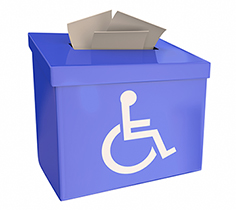| RECENT | A CLEAR PATH TO VOTING
|
| 2025: Year in Review | |
| Opening Doors to Inclusion: Automatic Doors Reflect the Values of International Day of Persons with Disabilities | |
| National Disability Employment Awareness Month Celebrates 80 Years; Our Industry Does, Too. | |
| Absent Mandates, Automatic Doors Still Best for Schools | |
| AAADM Adds 'Building Code Tracker' to Website; Lists States Embracing IBC Accessibility Mandate | |
| Opening Doors to Better Healthcare: The Power of Automation | |
| Disability Pride Month 2025 | |
| AAADM Joins PASS for Safer Schools | |
| Automatic Doors Add More 'Service' to Foodservice | |
| Five Years of 'Magic': National Automatic Door Day | |
| 2024: Year in Review | |
| International Persons with Disabilities Day: Enhancing Accessibility for All | |
| Vote for Accessibility: Removing Physical Barriers at Polling Places | |
| Opening "Automatic" Doors for Employees with Disabilities | |
| The Modern Office Building in a No-Touch World | |
| Summer's Here and the Time is Right for ... Addressing School Access | |
| July is Disability Pride Month: Why Aren't Automatic Doors Mandated by the ADA? | |
| The Important Work of the U.S. Access Board | |
| Rolling Out the Red Carpet for National Automatic Door Day | |
| New Certification Program for 2024 | |
| International Persons with Disabilities Day | |
| The Right to Vote | |
| The Modernity and Aesthetics of Automatic Doors | |
| July is Disability Pride Month | |
| A Lot to Learn | |
| ASSA ABLOY's Dave Timmerman is New President of American Association of Automatic Door Manufacturers | |
| Automatic Doors: Champions of Access | |
| AAADM Leadership Delivers U.S. Access Board Webinar | |
| AAADM at 30: Safety is the Great Uniter | |
| Philadelphia Freedom | |
| Door Doctors | |
| Safe With Us | |
| State of the ADA | |
| A Clear Path to Voting | |
| "GREEN" Doors: Earth Day and Automatic Doors | |
| Do the right things, get money back | |
| The Second Annual Automatic Door Day | |
| FOOD FOR THOUGHT Restaurant patrons overwhelmingly say they want automatic doors | |
| My Electrician Says He Can Fix My Automatic Door. Should I Let Him? | |
| Automatic Doors Have Graduated Beyond Entryways | |
| Greet Your Guests in the New No-Touch World | |
| Automatic Door Day | |
| IBC Building Code | |

